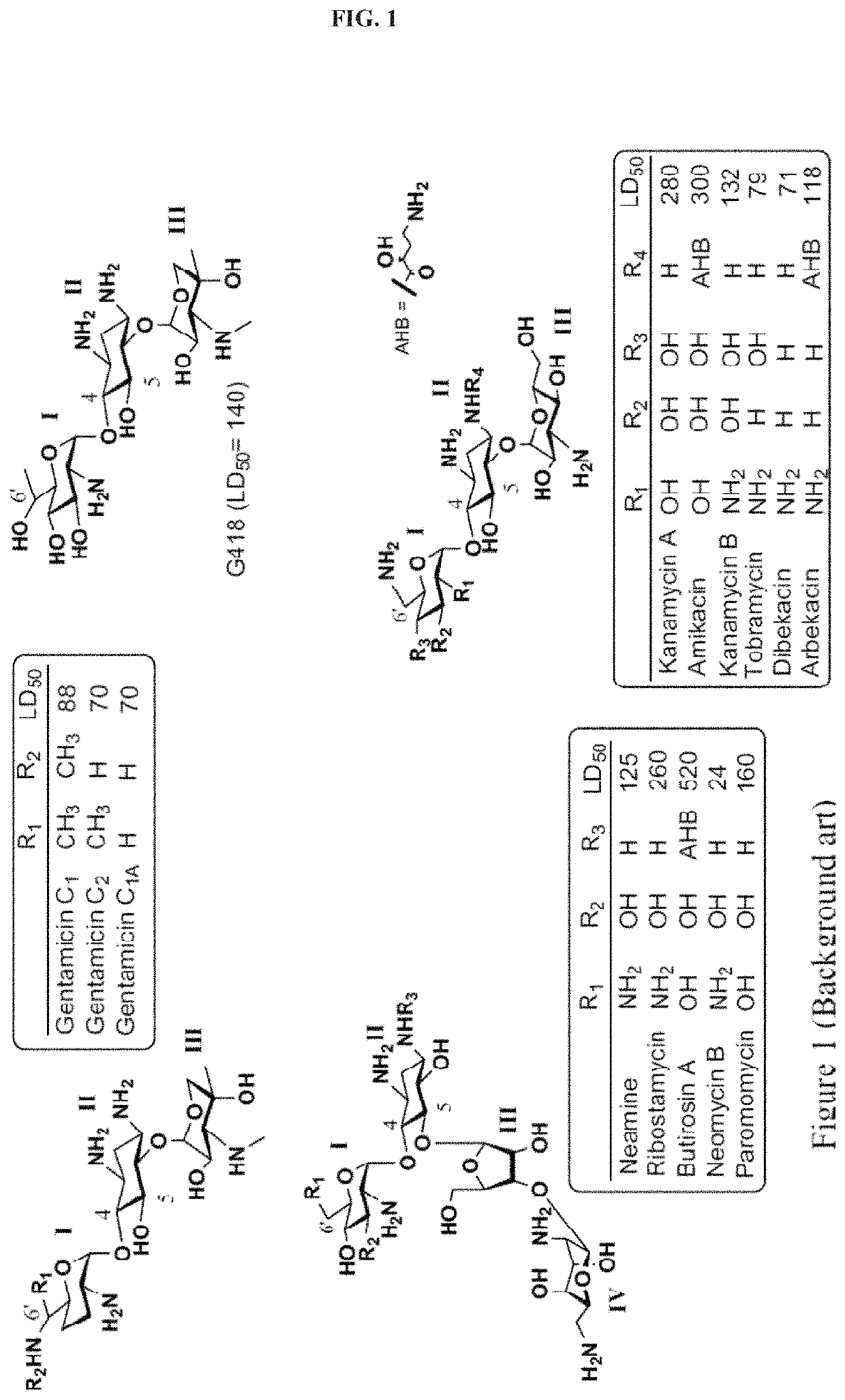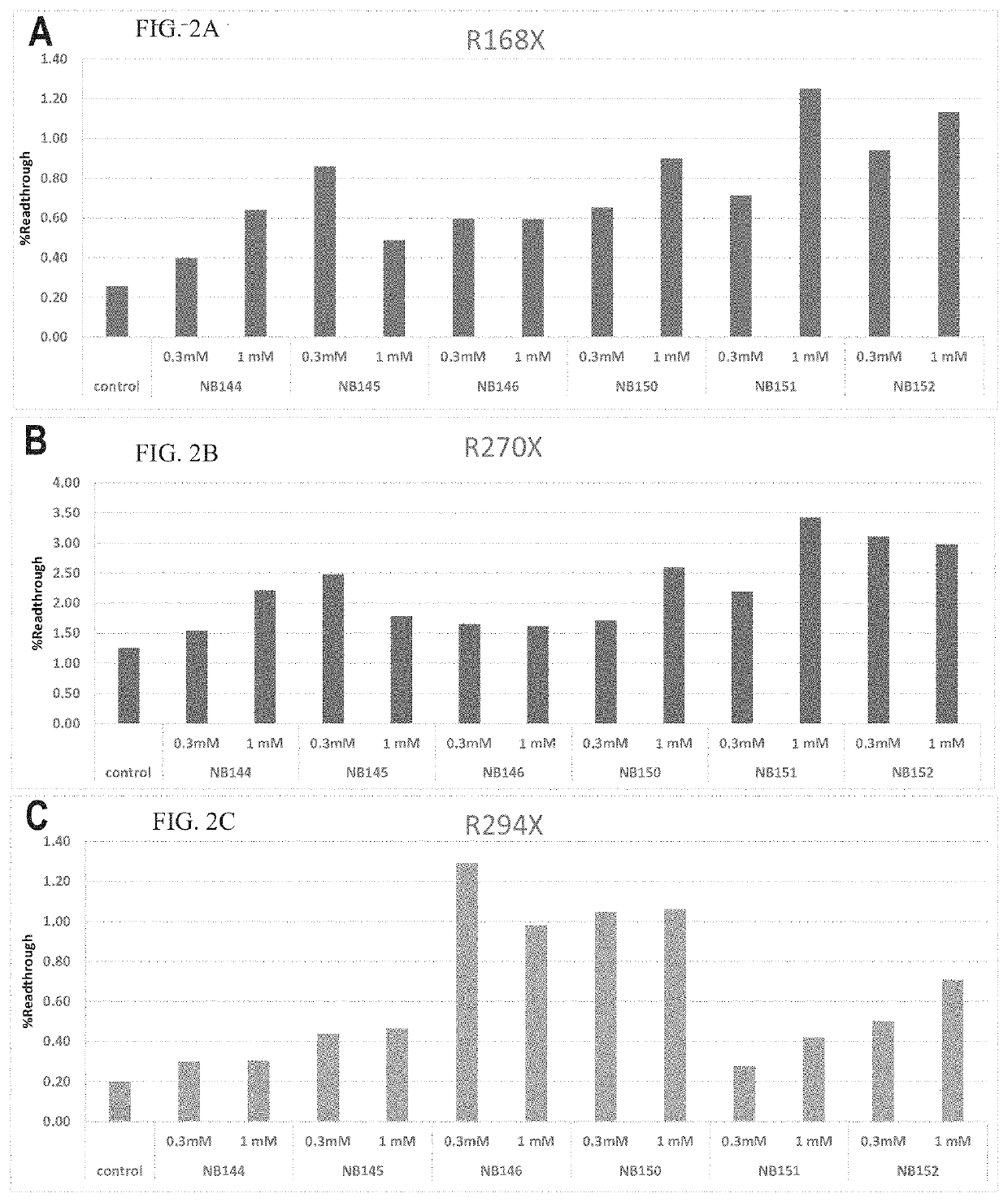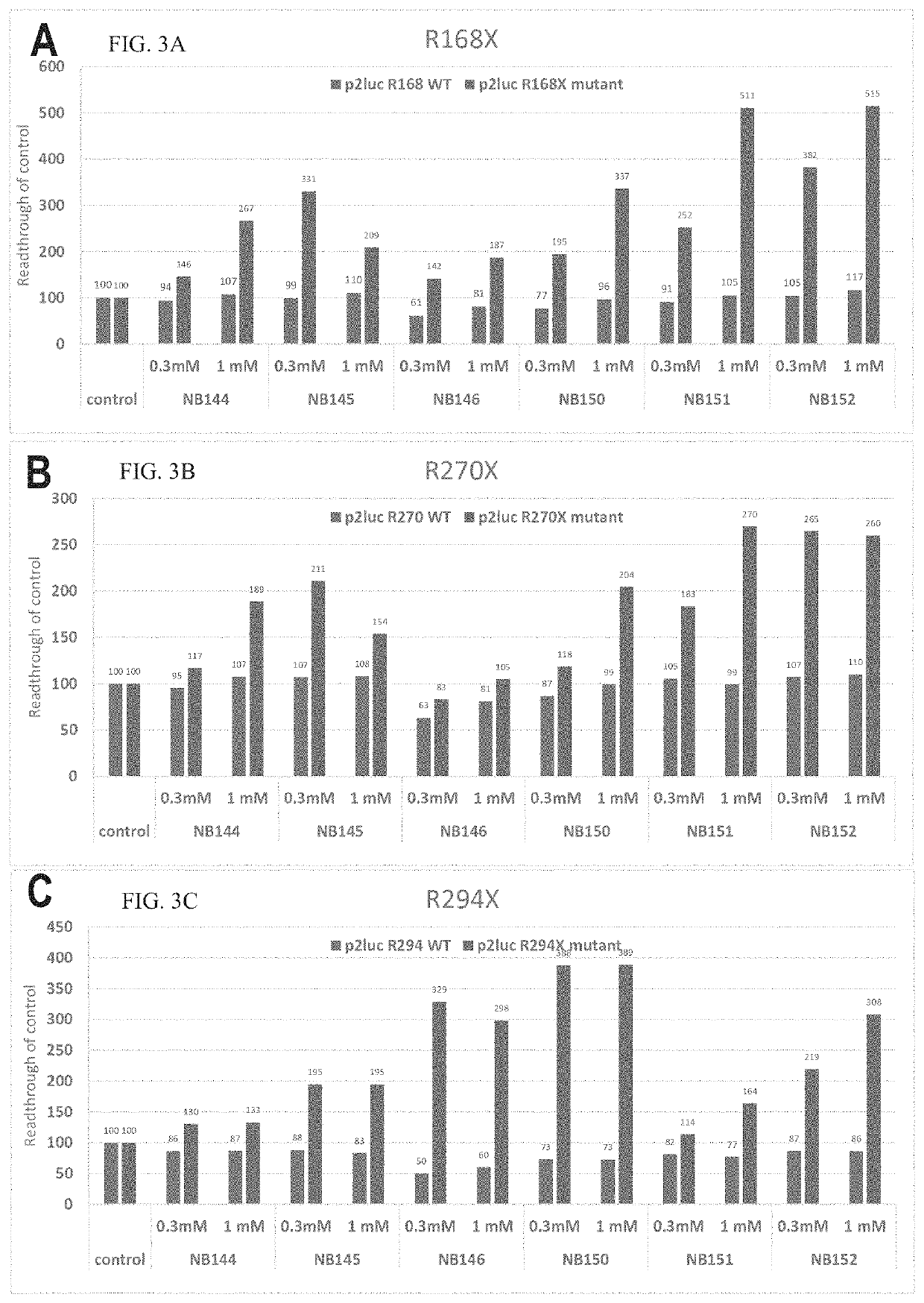Aminoglycoside derivatives and uses thereof in treating genetic disorders
a technology of aminoglycosides and derivatives, applied in the field of aminoglycosides, can solve the problems of undesirable antimicrobial activity of read-through drugs, no effective treatment, and premature termination of translation and eventually to truncated inactive proteins, and achieve the effects of low toxicity, high premature stop codon mutation read-through activity, and beneficial us
- Summary
- Abstract
- Description
- Claims
- Application Information
AI Technical Summary
Benefits of technology
Problems solved by technology
Method used
Image
Examples
example 1
Chemical Syntheses of Cell-Permealizing Group-Containing Exemplary Compounds According to Some of the Present Embodiments
[0692]In general, aminoglycosides (AGs) antibiotic are charged at physiological pH, thus they may be limited in their absorption through the GI tract and are therefore typically administered by injection. In addition, AGs exhibit limited permeability into eukaryotic cells, which requires their administration in higher dosages in order to overcome the cellular uptake limitation, which in turn causes adverse effects and limits their use in translational therapy. The compounds described in this example were designed in order to solve these problems.
[0693]To mitigate the GI tract absorption problem, alkyl / aryl groups have been attached on the pseudo-disaccharide scaffold at the N1 position of a paromamine-derived aminoglycoside. Exemplary compounds NB144, NB145, NB146 and NB147 (see, Table 1 herein), were prepared so as to exhibit respectively an isopropyl, a benzyl, ...
example 2
Readthrough Activity in Cell-Based Assay of Compounds of Example 1
[0789]Experimental Method:
[0790]Suppression of nonsense mutations (readthrough activity) by the tested compounds according to embodiments of the present invention was tested in vitro using reporter plasmids harboring a mutation in the chosen gene, as described, for example, in U.S. Pat. No. 8,895,519 and by Vecsler, M. et al. [PLoS ONE, 2011, 6(6) p. e20733].
[0791]Briefly, HEK-293T cells were transfected by the plasmids, and 24 hours post transfection the cells were lysed and tested for the expression levels of the firefly luciferase and renilla luciferase. Wild-type (WT) plasmids expressed both firefly luciferase and renilla luciferase while mutant plasmids only expressed the renilla luciferase due to the stop codon found in the inserted sequence. In the tested compounds' readthrough activity assays, the compounds were added to the cells' suspension 6 hours post-transfection. In case the compounds exerted suppression...
example 3
Readthrough Activity in Cell-Free Assay of Compounds of Example 1
[0801]Experimental Method:
[0802]The plasmids were transcribed in vitro and translated using rabbit reticulocytes (TNT mix) and then tested for the expression levels of the firefly and renilla luciferases.
[0803]WT plasmids expressed both firefly and renilla luciferases while mutant plasmids expressed only the renilla luciferase due to the stop codon found in the inserted sequence. The readthrough assays were conducted for the tested compounds and the controls by adding the compounds to the in vitro transcription / translation reaction mixture. In case the compounds exerted suppression of the premature nonsense / stop codon mutation, the firefly luciferase was expressed and a fold-change in its expression was observed.
[0804]Results:
[0805]Readthrough activity of Cystic Fibrosis (CF) mutation G542X was tested using the compounds presented in Table 1, and the mutation suppression was calculated based on firefly / renilla expressi...
PUM
| Property | Measurement | Unit |
|---|---|---|
| temperature | aaaaa | aaaaa |
| temperature | aaaaa | aaaaa |
| temperature | aaaaa | aaaaa |
Abstract
Description
Claims
Application Information
 Login to View More
Login to View More - R&D
- Intellectual Property
- Life Sciences
- Materials
- Tech Scout
- Unparalleled Data Quality
- Higher Quality Content
- 60% Fewer Hallucinations
Browse by: Latest US Patents, China's latest patents, Technical Efficacy Thesaurus, Application Domain, Technology Topic, Popular Technical Reports.
© 2025 PatSnap. All rights reserved.Legal|Privacy policy|Modern Slavery Act Transparency Statement|Sitemap|About US| Contact US: help@patsnap.com



